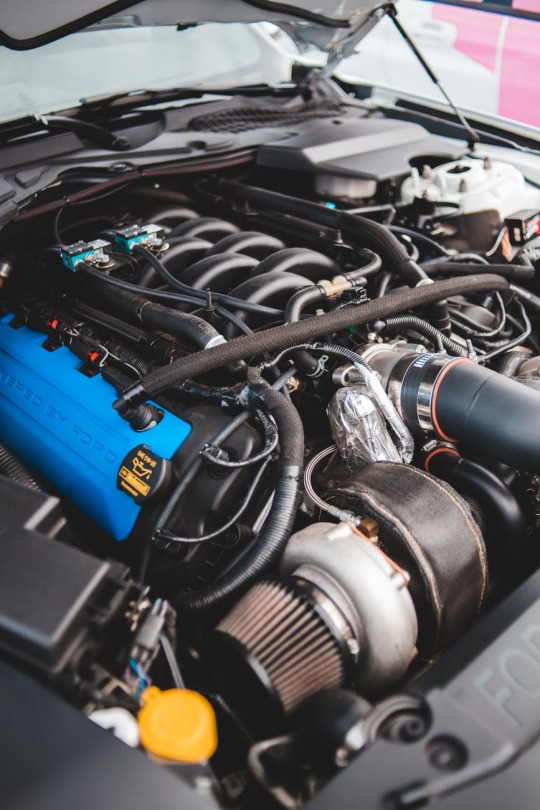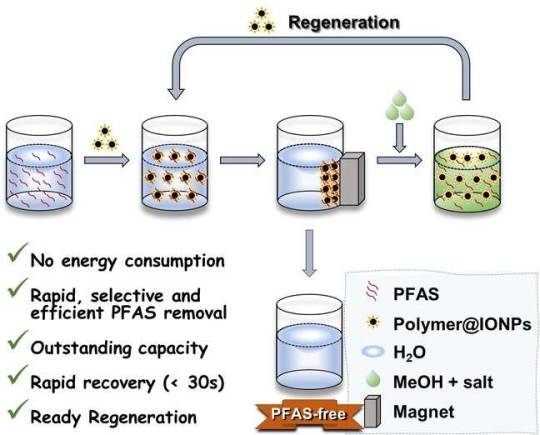#Australian Institute for Bioengineering and Nanotechnology
Explore tagged Tumblr posts
Text

If you’re thinking ‘Hey that looks like microcomputed tomography of an Asian gecko inside a 7mm egg’, well … you’d be spot on.
Photograph: Ekaterina Strounina
Australian Institute for Bioengineering and Nanotechnology
#ekaterina strounina#photographer#asian gecko#gecko#microcomputed tomography#australian institute for bioengineering and nanotechnology#micro photography#nature
23 notes
·
View notes
Text
by Australian Institute for Bioengineering and Nanotechnology (AIBN)
Researchers at The University of Queensland (UQ) are developing new 4D printing technology that produces shape-shifting liquid metals for soft robotics.
4D printing is an extension of 3D printing, where solid objects are created using materials that can change shape when exposed to certain stimuli like heat, water or light.
At UQ's Australian Institute for Bioengineering and Nanotechnology (AIBN), researchers are printing 4D structures using new liquid metal polymers that can be coaxed into performing a range of mechanical tasks with infrared lasers.
Lead researchers Dr. Liwen Zhang and Dr. Ruirui Qiao said the unique preparation methods developed by their lab allow them to produce 4D designs that are solid and durable while also being able to bend, grasp, lift, and release items five times their weight, or revert to a pre-programmed shape.
"4D printing takes traditional 3D printing and adds a new dimension—the dimension of time," Dr. Zhang said. "Our method allows us to produce smart liquid metals that can be customized, shaped and prompted to change over time without needing wires or circuits.
"This is a new era for robotics applications and a game-changer for additive manufacturing."
4D printed objects are usually prepared with a 3D printer using specific ingredients that give the finished product new qualities and abilities.
#robot#robotics#3d printing#Australian Institute for Bioengineering and Nanotechnology#soft robotics
17 notes
·
View notes
Text

#Dr Julio Aguado#Australian Institute for Bioengineering and Nanotechnology#turning back the clock on aging brains#some people look for the most minuscule detail in others#to speculate and then fabricate a story#because they revel in judgement#pay those people no attention#they are called jealous haters
1 note
·
View note
Text
Also preserved in our archive (daily updates!)
University of Queensland-led research has found inflammatory markers in the blood of long COVID patients which could explain why many experience ongoing cardiovascular issues.
Associate Professor Kirsty Short said the team set out to investigate the cause of persistent chest pain and heart palpitations commonly reported by many long COVID sufferers.
"We discovered elevated levels of cytokines, proteins which help control inflammation in the body, in the blood samples of people at about 18 months post-infection with SARS-CoV-2," Dr Short said.
"Lab studies showed these trace-level cytokines had a direct effect on the functionality of cardiomyocytes, the cells of the heart responsible for its pump function.
"These particular types of cells are fundamental building blocks for our heart, so damaging them can lead to cardiovascular symptoms."
Dr Short said until now, the role of chronic inflammation in cardiovascular symptoms hadn't been clear, particularly in individuals with symptoms persisting for over a year after infection.
The study involved analysing the blood of 50 participants across Australia who had either suffered long COVID for more than a year, had recovered from COVID, or had never had the virus.
The researchers used 'immuno-storm chip' nanotechnology developed at UQ's Australian Institute for Bioengineering and Nanotechnology (AIBN) to discover trace elevated cytokines in the long COVID cohort, along with cardiac tissue damage markers measured at single-molecule resolution in blood.
"It's only early days and these results require validation in additional patient cohorts, including those infected with more recent SARS-CoV-2 strains," Dr Short said.
"We're now curious to know whether our findings could be applied to other symptoms of long COVID such as neurological disease or respiratory disease, as this study actively recruited sufferers with chest pain and/or heart palpitations.
"Despite these limitations, this work offers some important new insights into this complex disease, and hopefully offers opportunities to improve the diagnosis, treatment and understanding of long COVID."
The research was led by UQ PhD candidates Jane Sinclair from the School of Chemistry and Molecular Biosciences (SCMB), Courtney Vedelago from AIBN and Dr Feargal J. Ryan from the South Australian Health and Medical Research Institute.
The research was a collaboration involving UQ's SCMB, School of Mathematics and Physics , AIBN, Institute for Molecular Bioscience and Faculty of Medicine as well as the South Australian Health and Medical Research Institute, Flinders University, the University of Adelaide, the Australian National University, Mater Health Queensland, Mater Research Institute - UQ and QIMR Berghofer Medical Research Institute.
The samples for the research were provided by the COVID OZGenetics study, the Central Adelaide Health Network and the David Serisier Research Biobank at Mater Research.
The research paper was published in Nature Microbiology.
Study link: www.nature.com/articles/s41564-024-01838-z
#mask up#covid#pandemic#public health#wear a mask#covid 19#wear a respirator#still coviding#coronavirus#sars cov 2#long covid
80 notes
·
View notes
Text
Nanoparticles to Fight Breast Cancer
Australian researchers are developing next-generation iron-based nanoparticles to improve treatment for triple-negative breast cancer (TNBC). This aggressive cancer lacks protein targets, making conventional therapies ineffective in treating cancer. Scientists from the University of Queensland’s Australian Institute for Bioengineering and Nanotechnology (AIBN) aim to change that. Their…
0 notes
Text
Nanoparticles to Fight Breast Cancer
Australian researchers are developing next-generation iron-based nanoparticles to improve treatment for triple-negative breast cancer (TNBC). This aggressive cancer lacks protein targets, making conventional therapies ineffective in treating cancer. Scientists from the University of Queensland’s Australian Institute for Bioengineering and Nanotechnology (AIBN) aim to change that. Their…
0 notes
Text
India Poised to Lead Global Innovation, with Hyderabad Emerging as a World-Class Healthcare and Research Hub: TIQ Delegation at BioAsia 2025

Hyderabad’s IT and Research Capabilities Position It as a World-Class Hub, Connected to Global Innovation Centers Like Boston, Singapore, and Queensland
Hyderabad, 26th January 2025: Trade and Investment Queensland (TIQ), the Queensland Government’s dedicated business agency presented a 20 member high profile delegation, in the gracious presence of Her Excellency, Honourable Governor of Queensland Dr. Jeanette Young, along with The Honourable Minister for Finance, Trade, Employment, and Training in Queensland, Ros Bates at BioAsia 2025. Named as Global Sponsors for BioAsia 2025, TIQ anchored several engagments at Asia’s premier life sciences and biotechnology forum, organized annually by the Government of Telangana, India. This strategic partnership reinforces both regions’ commitment to driving innovation, fostering high-impact research, and accelerating advancements in global healthcare.
With a strong focus on fostering synergies between Telangana and Queensland, the TIQ delegation highlighted India’s pivotal role in global innovation, with Hyderabad positioned at the forefront of IT, research, and healthcare. Professor Alan Rowan, Director and Interim Pro Vice Chancellor (Research Infrastructure) at the Australian Institute for Bioengineering and Nanotechnology, University of Queensland (UQ), underscored India’s unique potential to become a frontier leader in scientific research, backed by their massive IT prowess and research advancements.
Addressing the media, Alan said, "Hyderabad is rapidly evolving into a world-class center for healthcare infrastructure and cutting-edge research. The city is now seamlessly connected with global innovation hubs like Boston, Singapore, and Queensland, accelerating its position as a powerhouse in biotechnology, medical research, and engineering."
He was joined by leading experts from Queensland’s research and healthcare ecosystem, including:
Prof. Trent Munro, Director, Biotechnology Innovation, UQ
Dr. Romain Tropée, Head of Science and Technology, Southern RNA (SRNA)
Prof. Evelin Tiralongo, Director, Clinical Trial Unit, Griffith University
Chris Peck, Chief Executive Officer, SRNA
Dr. Teck Jack TAN, Chief Medical Officer, TeleMedC Pty Ltd
Professor Prasad Yarlagadda, Dean, Engineering, University of Southern Queensland (UniSQ)
Shannon Willoughby, Executive Director, Strategic Partnerships Office, UQ
Sarah Costanzo, Associate Director, Advanced Manufacturing and Deep Technologies, UQ
Saravanan Nagarathinam, Manager Strategy and Partnerships, UQ
Dr. Harpreet Johal-Meredith, Business Development Director, Resolian Bioanalytics Brisbane
Thomas Lake, Senior Vice President, Vaccine Alliances & Commercialization, Vaxxas
Michael Power, Global Director – Sales, HealthCare Logic
Dr Christopher Ogg, Founder, HealthCare Logic
Chris Reid, Platform Sales Professional, HealthCare Logic
Brett Sellars, Hospital Engagement Lead, HealthCare Logic
Priyanka Risikesan, Deputy Chief Technology Officer, HealthCare Logic
Prof Rajiv Khanna, Co-Director, Queensland Immunology Research Centre, QIMR
Dr Rajiv Tyagi, Head of Strategic Commercial Alliances, QIMR
Anand Gautam, Founder, G2Ome Consulting Pty Ltd,
The discussions highlighted the scope for joint research, clinical trials, and technology-driven solutions between India and Queensland. The collaboration is expected to drive new investments and foster deeper scientific cooperation. Adding to the conversation, Abhinav Bhatia, Senior Trade & Investment Commissioner - South Asia, Trade and Investment Queensland, said that "BioAsia 2025 to deepen Queensland’s engagement with India’s thriving life sciences and technology ecosystem. With India being the world’s pharmacy and Queensland being a research power-house, this dynmaic collaboration enables breakthroughs that contribute to the advancement of global healthcare.”
This strategic engagement between Telangana and Queensland reaffirms Hyderabad’s position as a global leader in science, healthcare, and innovation, paving the way for transformative advancements in the sector.
About Trade & Investment Queensland (TIQ):
Trade and Investment Queensland is the Queensland Government’s dedicated global business agency, with 18 offices in 14 key markets, including South Asia, helping Queensland exporters take their products to world markets and promoting Queensland as the perfect place for investment.
For more details, visit: www.tiq.qld.gov.au
0 notes
Link
From a heart-shaped stem cell colony to purple gold and ‘science candies’, these are the 12 finalists for the 2023 Australian Institute for Bioengineering and Nanotechnology image contest. Each year in the lead up to National Science Week, researchers...
0 notes
Text
Brisbane’s GMG says new aluminium battery can charge 20 to 60 times faster
Brisbane’s GMG says new aluminium battery can charge 20 to 60 times faster
Good News Notes: “Brisbane-based clean technology company Graphene Manufacturing Group says its graphene aluminium-ion batteries can charge as much as 60-times faster than the best lithium-ion batteries, and are also longer-lasting and much safer, with a lower environmental impact than traditional batteries. GMG was founded to develop energy storage products using its own in-house proprietary…

View On WordPress
#aluminum#Australian Institute for Bioengineering and Nanotechnology#Brisbane#charging times#clean technology company#electric vehicles#energy density#GMG#good news#graphene aluminium-ion batteries#Graphene Manufacturing Group#graphite#grid storage battery systems#happy#help#joy#kindness#laptops#lithium-ion battery#lower environmental impact#need#patent-pending#phones#positive#potential benefits#power density#Uniquest#University of Queensland#watches
0 notes
Photo

A magnetic method to clean PFAS contaminated water
Researchers at The University of Queensland have pioneered a simple, fast and effective technique to remove PFAS chemicals from water.
Using a magnet and a reusable absorption aid that they developed, polymer chemist Dr. Cheng Zhang and Ph.D. candidate Xiao Tan at the Australian Institute for Bioengineering and Nanotechnology have cleared 95 percent of per- and polyfluoroalkyl substances (PFAS) from contaminated water in under a minute.
"Removing PFAS chemicals from contaminated waters is urgently needed to safeguard public and environmental health," Dr. Zhang said, "But existing methods require machinery like pumps, take a lot of time and need their own power source."
"Our method shows it is possible to remove more of these chemicals in a way that is faster, cheaper, cleaner, and very simple. Because our process does not need electricity, it can be used in remote and off-grid communities."
Read more.
29 notes
·
View notes
Text

Scientists use magnetic resonance microscopy as a non-invasive MRI method to visualise internal organs. This spiky-looking specimen is actually a rat kidney.
Photograph: Gary Cowin/AIBN
2023 Australian Institute For Bioengineering And Nanotechnology Image Contest
#gary cowin#photographer#australian institute for bioengineering and nanotechnology image contest#magnetic resonance microscopy#micro photography#internal organs#rat kidney#nature
13 notes
·
View notes
Text
Is LEAPER a Safer Substitute to CRISPR?

The researchers from Peking University have developed a new gene-editing technique that they say could have profound effects on the treatment of certain diseases.
The scientists believe that it is a CRISPR alternate for fighting human diseases. They call it LEAPER. According to a research paper published on Monday in the journal Nature Biotechnology, this new tech, LEAPER, which stands for “leveraging endogenous ADAR for programmable editing of RNA,” is said to prevent several of the drawbacks of CRISPR- Cas13.

Similar to Cas13, LEAPER aims strands of RNA– molecules in cells that like DNA carry hereditary information, but also is a significant player in its replication. The technique uses engineered strands of RNA which employ another type of enzyme, ADAR, to exchange one compound found in RNA for another. This, in turn, avoids some of the problems of existing gene-editing techniques, which include immune responses and unwanted side-effects. According to the researchers, this technique is efficient, rarely misses its targets, and can be used on several different cell types.
“There are clear prospects for using this new technology in disease treatment,” said Zhou Zhuo of Peking University’s School of Life Sciences, one of the lead authors of the paper. He noted that LEAPER has the ability to precisely switch adenosine — one of the molecules that make up RNA — for one which is similar to another molecule called guanosine. That is important because almost half of the known hereditary disorders can be corrected by swapping adenosine and guanosine, Zhou told Caixin Global.
The technique has proved effective for Hurler Syndrome — a rare and devastating genetic disorder. When tested on cells taken from people with the same disease, it showed good results suggesting at its potential use in gene therapy. “[The scientists] show that in human Hurler syndrome skin cells they can correct sufficient amounts of the mutated form of RNA to restore the defective enzyme activity that causes this disease,” informed professor Ernst Wolvetang, a geneticist from the University of Queensland in Australia who was not involved in the research.
The technique seems to have “substantial potential,” and is a breakthrough toward the treatment of genetic diseases.
Dr. Wolvetang, who leads a team at the Australian Institute for Bioengineering and Nanotechnology, said the way LEAPER technology works means it might not be effective on some types of cells, and that it didn’t eliminate unwanted genetic changes. He added that the technique has not been tested on animals yet. But he said LEAPER was plainer than existing gene-editing techniques because it uses only a single component — an arRNA — while the CRISPR-Cas method uses both a Cas-enzyme and guide RNA. For this reason, it is “more easily deliverable, and less likely to result in unwanted cellular immune responses.”
Many Chinese researchers have repeatedly claimed to provide alternate to CRISPR techniques. Previously, a paper in Natural journal was published about a different pair of genetic scissors known as NgAgo, which was initially publicized as an alternative to CRISPR. However, the paper was later withdrawn after several failed attempts to replicate its findings.
Research in gene editing has invited a lot of criticism especially after a Shenzhen based scientist He Jiankui announced in November that he had used CRISPR technology to edit the genomes of 2 girls who were born the previous month.
This led the Chinese government to introduce a draft regulation in May, specifying that those who manipulate genes in embryos or human adults will be held legally responsible for the effects of their work.
New post published on: https://www.livescience.tech/2019/08/23/is-leaper-a-safer-substitute-to-crispr/
2 notes
·
View notes
Text
0 notes
Text
Also preserved in our archive (Daily updates!)
By Rodielon Putol
For countless individuals worldwide, grappling with the lingering impacts of COVID-19 months after their initial recovery has become a puzzling reality.
Often referred to as “long COVID,” the condition is marked by an array of recurring symptoms, including chest pain and heart palpitations.
But why do these symptoms persist? Recent research by the University of Queensland (UQ) offers profound insights.
Cardiovascular impact of long COVID Getting to the root of the matter, the University of Queensland-led investigation focused on post-COVID cardiovascular issues. The goal was to understand why chest pain and heart palpitations persist among long COVID sufferers.
“We discovered elevated levels of cytokines, proteins which help control inflammation in the body, in the blood samples of people at about 18 months post-infection with SARS-CoV-2,” said Professor Kirsty Short.
“Lab studies showed these trace-level cytokines had a direct effect on the functionality of cardiomyocytes, the cells of the heart responsible for its pump function.”
Professor Short noted that these particular types of cells are fundamental building blocks for our heart, so damaging them can lead to cardiovascular symptoms.
Until now, the role of chronic inflammation in cardiovascular symptoms had been unclear, particularly in cases where symptoms persisted for over a year after infection.
These findings bring the medical community one step closer to understanding the full extent of COVID-19’s long-term impact on heart health.
Studying long COVID through blood samples To explore the mysteries of long COVID, the team analyzed the blood of 50 participants from across Australia.
This cohort included individuals who had been living with long COVID for over a year, those who had recovered from COVID-19, and individuals who had never been infected by the virus.
A unique technology developed at UQ’s Australian Institute for Bioengineering and Nanotechnology (AIBN) called “immuno-storm chip” nanotechnology, was the tool of choice to investigate trace elevated cytokines. The experts also examined markers linked with cardiac tissue damage.
Although excited about the findings, Professor Short remains cautious. “It’s only early days and these results require validation in additional patient cohorts, including those infected with more recent SARS-CoV-2 strains.”
Professor Short also noted that the study’s focus was primarily on people with cardiovascular symptoms.
Despite the limitations, the research paves the path toward a better understanding of long COVID. It presents comprehensive insights into this complex disease and could potentially enhance diagnosis and treatment options.
A collaborative scientific endeavor The research team included Jane Sinclair, a Ph.D. candidate from UQ’s School of Chemistry and Molecular Biosciences, Courtney Vedelago from AIBN, and Dr. Feargal J. Ryan of the South Australian Health and Medical Research Institute.
The study represents a collaborative effort by multiple institutes, including UQ’s School of Mathematics and Physics, Institute for Molecular Bioscience, Faculty of Medicine, Mater Health Queensland, Mater Research Institute-UQ, and several other institutions.
COVID’s lasting impact on heart health The findings from the study highlight the importance of understanding the long-term cardiovascular effects of COVID-19, particularly for individuals grappling with symptoms over a year post-infection.
By identifying elevated cytokine levels and their impact on cardiomyocytes, the research opens doors for targeted treatments focused on reducing inflammation to protect heart health in long COVID patients.
“An estimated 65 million people globally suffer from post-acute sequelae of COVID-19 (PASC), with many experiencing cardiovascular symptoms like chest pain and heart palpitations,” noted the study authors.
Guiding future research While the research team remains cautious about drawing broad conclusions, they acknowledge the study’s potential in guiding future research.
This initial study suggests a need for expanded research across larger and more diverse populations to confirm the findings.
Additionally, future investigations could explore whether specific anti-inflammatory therapies might mitigate the persistent cardiovascular symptoms observed in long COVID patients.
This study marks a pivotal step in understanding long COVID, but it’s only the beginning. By continuing to investigate the role of chronic inflammation, scientists hope to develop clearer diagnostic tools and treatments, ultimately improving the quality of life for those affected by this complex condition.
The study is published in the journal Nature Microbiology. www.nature.com/articles/s41564-024-01838-z
#mask up#covid#pandemic#public health#wear a mask#covid 19#wear a respirator#still coviding#coronavirus#sars cov 2#long covid#covid conscious#covid is airborne
83 notes
·
View notes
Text
Gene Hackers Create Meatball From Resurrected Mammoth Meat
Flesh Stunt
You've heard of attempts to resurrect extinct animals, but this one might make your stomach turn.
Vow, an Australian cultivated meat company, has cooked up in its lab one of the most exotic and downright bizarre sources of protein your taste buds could ever relish: mammoth meatballs.
And no, "mammoth" isn't a descriptor of its size. We truly mean a meatball made from the flesh of a wooly mammoth — or at least, an approximation of it. If that's turning your head, well, that's the point.
Vow wants to raise awareness of lab grown meat as a tasty and cruelty-free alternative to the real deal, not to mention one that's less environmentally destructive. In this regard, the choice of a mammoth is meant to symbolize the loss of wildlife to humans and climate change. A potent and rousing symbol, if only undermined by the fact that it comes in the form of a weighty meatball.
"We need to start rethinking how we get our food. My biggest hope for this project is... that a lot more people across the world begin to hear about cultured meat," James Ryall, Vow's chief scientific officer, told CNN.
Frankenmeat
As far as food goes, this is about as Frankenstein of a creation as it gets. First, Vow scientists grabbed the mammoth DNA sequence for myoglobin, a skeletal muscle protein found in mammals, and then filled in the gaps using elephant DNA.
To culture the meat, the scientists inserted the mammoth myoglobin sequence into the stem cells of muscle from a sheep. From there, they let the cells grow for a few weeks and voilà: mammoth meat, approximately.
And for the scientists involved, there's nothing sheepish about using lamb cells. The meatball, they say, is still mostly mammoth.
"From a genomic point of view, it's only one gene amongst all the other sheep genes that is mammoth," Ernst Wolvetang, senior group leader at the Australian Institute for Bioengineering and Nanotechnology, told CNN. "It's one gene out of 25,000."
Not For Human Consumption
If you have your reservations about eating meat from an animal that's supposed to have been dead for thousands for years, you're in good company. Vow scientists don't want to risk eating it either.
"I've got no idea what the potential allergenicity might be of this particular protein," Ryall said. "It's not going to go up for sale, because we've got no idea about the safety profile of this particular product."
But believe it or not, a veritable mammoth meat connoisseur exists, and he says he'd love to take one for the team and give the meatball a taste.
"Without doubt I would love to try this!" Love Dalén, a professor of evolutionary genomics at Stockholm University who ate a piece of frozen baby mammoth during an expedition in Sibera, told CNN.
While Vow won't be peddling mammoth meat to customers (with the possible exception of Dalen), it does want to get its other products, like cultured quail meat, into restaurants. Singapore is a hopeful target, where lab meat has already been approved for human consumption.
More on lab meat: Scientists Say They Can Make Delicious Lab-Grown Fat, Weave It Into Fake Bacon
The post Gene Hackers Create Meatball From Resurrected Mammoth Meat appeared first on Futurism.
0 notes
Text
Researchers Develop a universal DNA Nano-signature for early cancer detection - University of Queensland
Researchers Develop a universal DNA Nano-signature for early cancer detection – University of Queensland

Killer T cells surround cancer cell. Credit: NIH
Researchers from the University of Queensland’s Australian Institute for Bioengineering and Nanotechnology (AIBN) have discovered a unique nano-scaled DNA signature that appears to be common to all cancers.
Based on this discovery, the team has developed a novel technology that enables cancer to be quickly and easily detected from any tissue type,…
View On WordPress
#breakthrough discovery#Cancer#Genesis Nanotechnology#Nano Medicine#Nano-Bio and Bio-Medicine#Nanomaterials#Nanotechnology#University of Queensland
5 notes
·
View notes